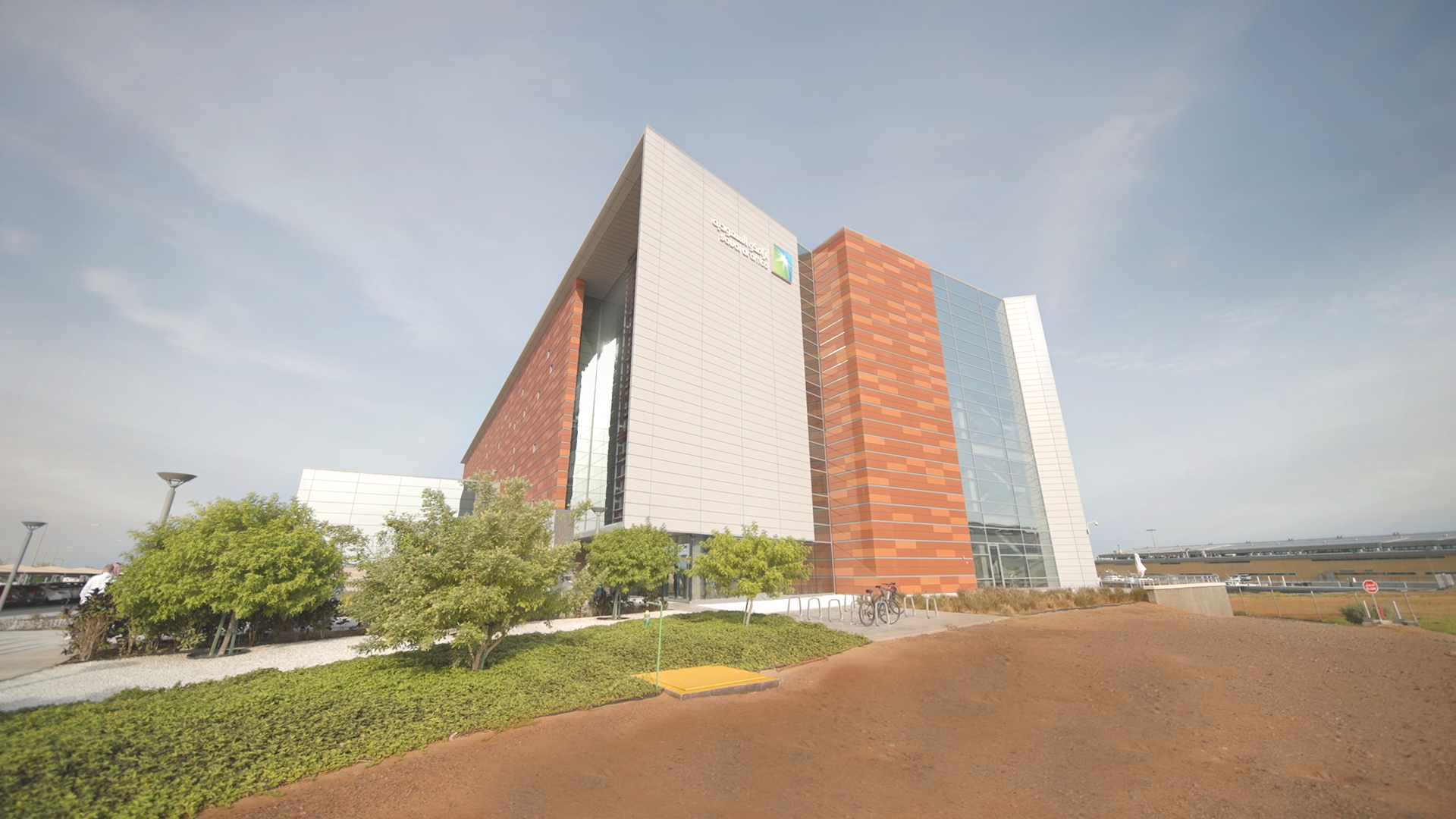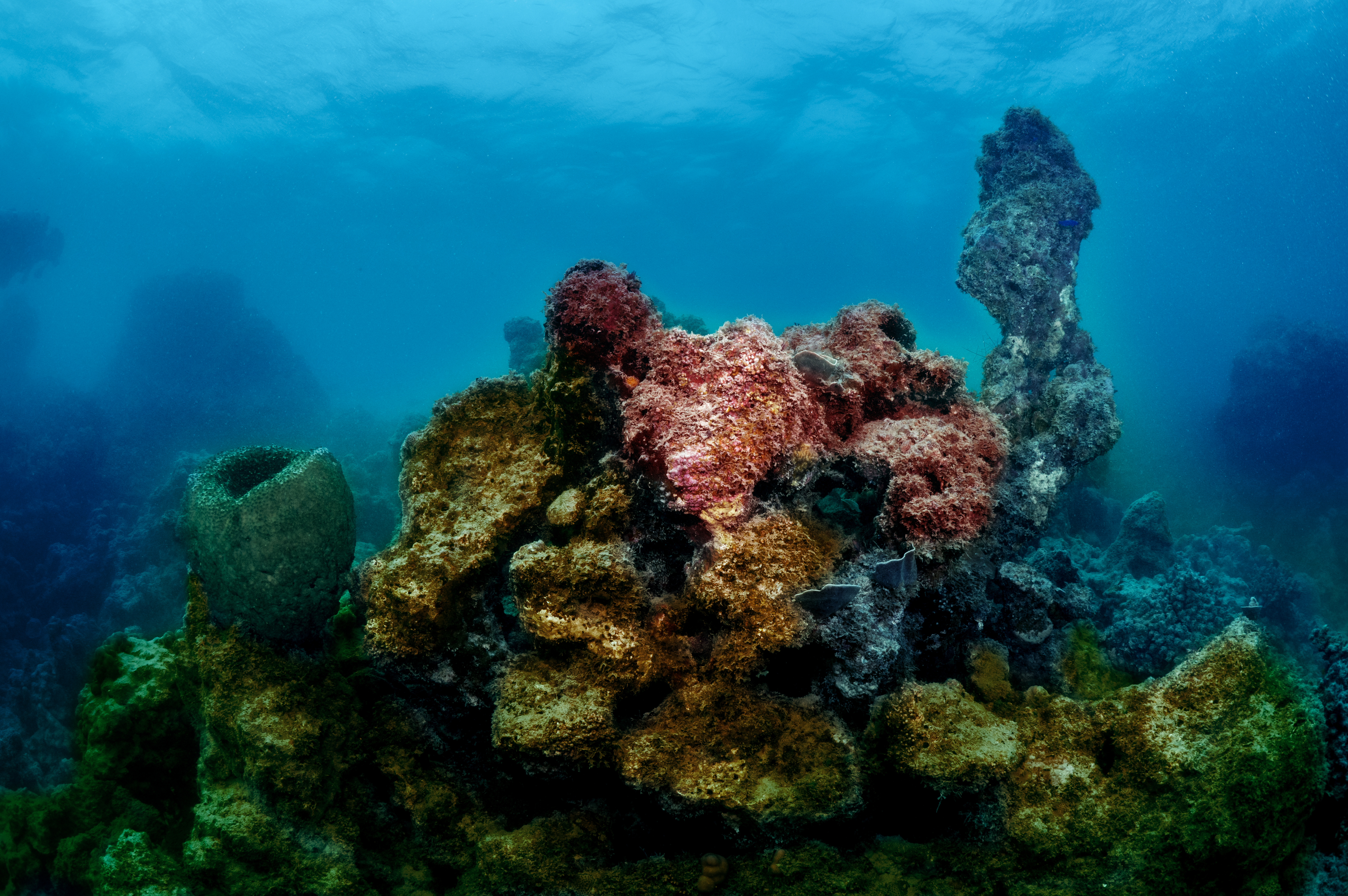Marine studies to protect our seas
For decades, Aramco has supported Arabian Gulf and Red Sea research that could help guide best practice in areas from conservation to fisheries management.

- Research into the Red Sea coral reefs revealed great biodiversity and an unusually high percentage of endemic species
- Oil and gas installations in the Arabian Gulf have been found to increase the number of fish and variety of species at a given location by acting as a type of artificial reef
- A study on coastal ecosystems in both the Red Sea and Arabian Gulf showed how mangrove trees sequester and store significant amounts of carbon despite the harsh environment in which they grow
The waters of the Arabian Gulf where Aramco operates — along with those of the Red Sea — boast some of the highest levels of diversity of marine life anywhere in the world, and we are playing our part to help protect those natural treasures.
Good decision-making requires good science, whether it's for environmental conservation or resource management. A comprehensive understanding of the rich ecology of the Red Sea and Arabian Gulf is crucial to ensure sustainable use and conservation of these regions.
This is why Aramco has tapped into the expertise of local academic and scientific research institutions to help us understand and protect our surrounding seas.
Partnering up
The Saudi Aramco-KAUST Marine Environmental Observations Center (SAKMEO), a partnership established in 2013 between Aramco and the King Abdullah University of Science and Technology (KAUST), has been on a fact-finding mission in the Red Sea, building a comprehensive inventory of its flora and fauna, and studying hydrological currents, winds, and wave patterns.
Similarly, the Sustaining Research Program — a decades-long partnership between Aramco and the Research Institute of the King Fahd University of Petroleum and Minerals (KFUPM/RI) — has produced a wealth of ecological and oceanographic information about the Arabian Gulf, a marine region distinct for having some of the warmest sea waters in the world.
These ongoing studies provide the company with in-depth knowledge that can help us reduce our ecological footprint. And research programs like these could, in future, also help us find solutions to many of the most pressing challenges of our times, such as conserving biodiversity, rebuilding the ocean's fish stocks, or combating global climate change.

Aramco research center — KAUST
Mapping nature's hidden treasures
The Red Sea coral reefs are known for their spectacular beauty and top many divers' bucket lists. The waters are warm year-round, and crystal clear, because there is little rain and virtually no river discharge. There are an astounding 364 species of hard corals found here, of which nearly six percent are thought to be endemic, meaning they don't occur anywhere else in the world.

Coral reefs — Red Sea (© Morgan Bennett-Smith)
Oil facilities a haven for marine life
With hundreds of oil and gas facilities in existence across the Arabian Gulf, we wanted to know what impact, if any, these have on the surrounding animal life and local fisheries.
The results of a study undertaken with KFUPM/RI show that oil and gas facilities seem to serve as nursery areas for small fish, and invertebrates such as mollusks and crustaceans. That function is enhanced because human access and activities in these areas are limited, creating a de facto protected region. The study showed a higher density of fish in locations with more oil and gas facilities. Nearer to shore, more species were found closer to coastal oil and gas installations. In addition, among the five areas sampled in the study, those with more oil and gas facilities had a higher number of species present.
.jpg?cx=0.5&cy=0.5)
Manifa — 27 artificial islands
Similar findings were made when a causeway that supports 25 offshore drilling sites across the Manifa-Tanajib Bay system was examined five years after it was built. An area that was previously disturbed by frequent boat traffic and overfishing, which impacted marine life, is now bouncing back and flourishing. Crevices and hollows along the causeway have become havens for fish, while sea urchins, barnacles, and sponges cover the hard surfaces of the causeway where there was previously only a muddy seabed.
Both studies revealed how submerged, artificial structures have the potential to enhance local fisheries and support marine life.
Yet very little is known about the surrounding Red Sea ecology. As part of a partnership, scientists from Aramco and the Red Sea Research Center at KAUST set out to study one of its most interesting regions, the multiple reefs around the Farasan Islands near the rift of the African and Arabian tectonic plates.
They found that almost every coral reef contained its own set of rare species, so any protected area would have to be carefully defined in line with the “species map” drawn up by the scientists.
These results are essential to sustain the Saudi government's conservation efforts around the Farasan Islands, an area that was nominated as a UNESCO biosphere reserve in 2021. On one of the research trips to this vicinity, marine biologists sifting through sediment samples discovered an entirely new species, a bristle worm that was named after the company that funded the study: Inermonephtys aramco. The bristle worm was collected in the southern region of the Red Sea at depths between 60 and 83 meters, and its discovery was made public in the Journal of the Marine Biological Association of the United Kingdom in 2017.
Monitoring natural carbon capture
Some coastal ecosystems, including saltmarshes and seagrass beds, are known to be natural carbon sinks — they capture and store atmospheric carbon dioxide, one of the most common greenhouse gases.
With its extremely high temperatures in the summer, high evaporation, and super-salty waters, it wasn't entirely clear how Saudi Arabia's coastal ecosystem functioned. For example, mangrove trees there grow only one to two meters tall, compared to 20-30 meters in parts of the tropics.
.png?cx=0.5&cy=0.5)
Mangroves, helps to sink carbon
Because there was little research on the so-called 'blue carbon' ecosystem in the region, we co-founded a study to help better understand this precious ecosystem.
The results showed that while mangroves in the Red Sea and the Arabian Gulf have lower capacity to store carbon in their biomass, due largely to their smaller size, they bury significant amounts in their sediments (sediment organic carbon stocks) — the mineral and organic material that settles around their root systems. Also, sediment carbon stocks are built up rapidly. Within 25 years, new mangroves already have sediment carbon stocks only one-third lower than long-established ones.
This study reinforced the scientific foundation for Aramco's large-scale program to help restore much of the original mangrove coverage in the region.
Despite the extreme environment, these coastal ecosystems — including seagrass beds and saltmarshes — are demonstrably sequestering carbon and helping to reduce greenhouse gases in the atmosphere.
The power to protect
Whether it's discovering a tiny worm, safeguarding an entire coastline, or helping to combat global warming, we believe our research can provide us with the power to help sustain a healthy natural environment.
More from Elements
The material in this article is intended to be for general informational purposes only, and readers should not place undue reliance on the statements or opinions therein. Any information provided speaks only as of the date this content was published and Saudi Aramco undertakes no obligation to correct, update, or revise any statements or opinions made in or implied by this article.



